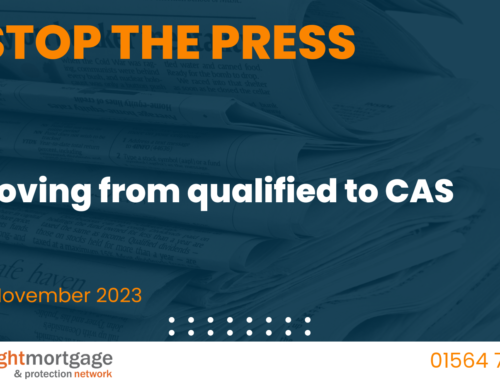Have you heard of the Formula 1 ‘trickle-down effect’?
Essentially, it describes the process of technology developed by experts in F1 eventually finding its way into the road cars we use every day: fuel efficient engines, carbon-fibre construction, flappy paddle transmissions, active suspension, traction control, anti-lock brakes…..the list goes on.
In fairness, the trickle-down effect is not restricted for F1. Everything from sports equipment to cookery utensils have benefitted from the trickle-down effect and it’s not difficult to see the way in which innovations developed initially for experts have found their way into everyday use for the benefit of us all.
What about the mortgage market, does the trickle-down effect work here as well, to the benefit of borrowers?
Yes, I think it does. One area where I suggest it’s currently evident is in the way in which affordability tests are being applied by lenders. An approach adopted for the specialist buy-to-let market is now also starting to make its way into the residential mortgage market.
Let me explain what I mean. Brokers are well aware that when it comes to buy-to-let mortgages, lenders need to apply the new FCA stress test that says a notional rate of 5.5% must be used for assessing affordability, to ensure that borrowers can cope with future rises in interest rates.
However, if a deal is based on as 5-year fixed rate or longer, then this notional rate doesn’t apply and the stress test can be carried out using the pay rate. The benefit for the borrower is that they can borrow more and, for property investors, being able to maximise the degree to which they can leverage their assets often makes good sense.
Until recently, few lenders carried this approach across into the residential market, but we’re now starting to see the trickle-down effect happening. For example, most mainstream lenders don’t differentiate by product when it comes to affordability. However, Dudley Building Society, Vida Homeloans, The Mortgage Lender, Precise Mortgages, Pepper Homeloans, Kent Reliance and Aldermore have all taken a different approach and offer residential 5-year fixed rate deals where the stress test is based on the pay rate, thus enabling the applicant to borrow more.
The following example illustrates my point very well. It is based on a single applicant earning £50,000 a year with no dependent children, who is purchasing a house using Dudley Building Society’s 5-yr fix available exclusively via 3mc. A deal based on a 5-yr 2.89% fix gives a loan of £295,000 when stress tested at the pay rate. However, the Dudley, 2.99% 2-yr fix (a very similar rate) only enables a loan of £214,500 when stress tested using a notional rate. That’s a difference of £80,500; not an insignificant amount, I’m sure you’ll agree.
I’m not suggesting that that brokers should encourage every client to borrow as much as they can by applying for this type of 5-yr fixed rate. However, what I am suggesting is that, in appropriate circumstances, this gives brokers and their clients greater flexibility than has hitherto been available. It’s another option and a very welcome trickle-down benefit in my opinion.
I’m sure we’ll see other product and service features trickle-down to the mainstream market in due course. Lenders are sometimes accused of not being innovative and being unwilling to think outside the box and develop products more closely aligned with borrowers needs. However, I think that’s being harsh and, if you look hard enough, there is evidence of more enlightened thinking taking place.
The truth is that Formula 1 racing and the UK mortgage market are not really that comparable, but this may just be one area where there is some common ground.





